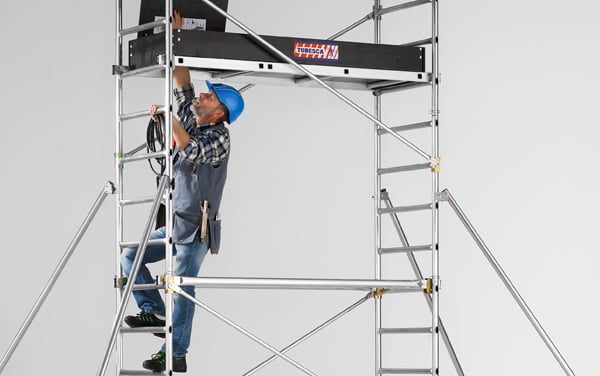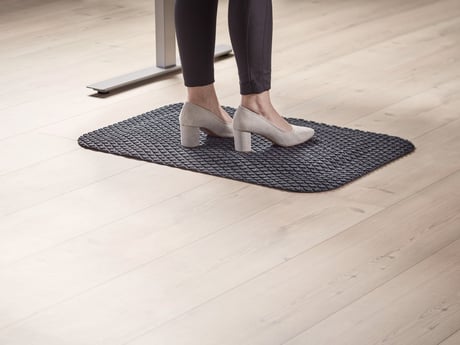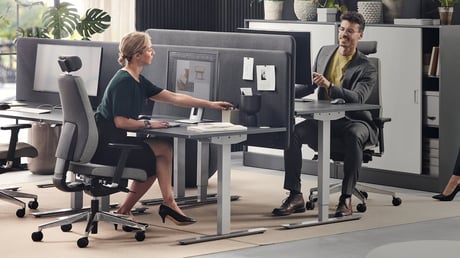- AJ Products IE
- Blog
- Buying guides
- A quick guide to ladders
A quick guide to ladders

The most important thing when buying a ladder is to make sure it will be safe for you to use. Most people have an idea of the style of ladder or steps they’re looking for but it can be difficult to narrow down the choices from there. Which ladder you should select will depend on a number of factors: who is using it, where it is being used, how high it needs to reach and how frequently it will be used.To try to help you choose we have produced a short guide to all the classifications and ratings you will see on our site.
Safe working load
All ladders manufactured within the EU should meet specific industrial standards. There are 3 classifications for ladders, which indicate the safe working load that the ladder is designed to support. These classifications cover all stepladders, platform steps, and single and extension ladders. There are currently no standards governing the use of mobile steps.
In the UK, ladders were previously classified by their “Duty rating”, as set out by the British Standards organisation, which takes into account frequency of use and general working conditions. This has been superseded by the more accurate “Maximum Static Vertical Load”, which is the safe working load that the ladder can hold. This is intended to cover the weight of a single person with their equipment.
What it all means
| Classification | Duty Rating | Maximum Static Vertical Load | Usage |
|---|---|---|---|
| Class 1 | 130 kg (20 stone) | 175kg (27 stone) | Industrial |
| (BS) EN 131 | 115 kg (18 stone) | 150 kg (23 stone) | Commercial & Trade |
| Class 3 | 95 kg (15 stone) | 125 kg (19 stone) | Domestic |
Most ladders will meet European Standard EN 131, which is suitable for most commercial and trade use, while a select few are certified to Class 1 for heavy-duty industrial use.
EN 14183: 2003 applies to step stools and is based upon a maximum load of 150 kg.
GS approved indicates that the product carries the Geprüfte Sicherheit ("Safety Tested") or GS mark, a voluntary certification mark for technical equipment. Any product bearing the GS Mark indicates that it was tested and complies with the minimum requirements of the German Equipment and Product Safety Act ("Geräte- und Produktsicherheitsgesetz", or "GPSG"), which is recognized throughout EU countries as a symbol of safety and may only be issued by an accredited product safety testing and certification agency.
SPCR 064 is a similar standard imposed by the Swedish Work Environment Authority to protect your safety.
There are a number of other British Standards you may come across that apply to specific ladder types:
- BS 2037:1994 applies solely to metal and aluminium ladders
- BS 1129: 1990 applies solely to timber ladders.
Stay safe
Most importantly, no matter which ladder you chose you should always take a few simple steps to stay safe:
- Always use the right type of ladder for the job.
- Always check that your ladder is in good working condition prior to use.
- Always have three points of contact with the ladder: this can be two feet and one hand but may also be two feet and your body (knees or chest) if you need your hands to work.
- Never over-reach: keep your body centred on the ladder at all times.
- Never exceed the safe working height of the ladder: on a leaning ladder you should never work off the top three rungs and the ladder should extend 1 m above where you are working; on a stepladder you should only stand on the top three steps if there is a suitable handhold.
- Never have more than one person on a ladder at one time.
- Make sure the ladder cannot slip; this may mean tying the ladder to secure it, using a stabilising device or securely wedging the ladder (against a wall, for example).
- Don’t overload the ladder; remember that the maximum load includes any equipment that you need to have with you.
- If you are using your ladder for electrical work make sure it is made from a suitable non-conductive material: we recommend glass-fibre as it provides insulation.


